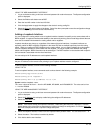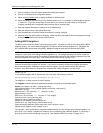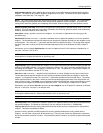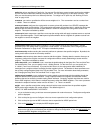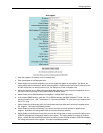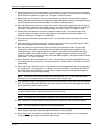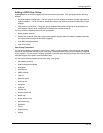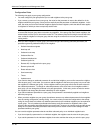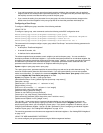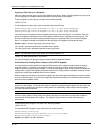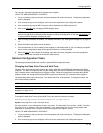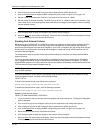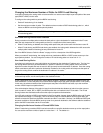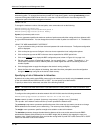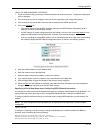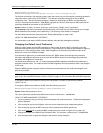
Configuring BGP4
• If you add a parameter to a peer group that already contains neighbors, the parameter value is applied to
neighbors that do not already have the parameter explicitly set. If a neighbor has the parameter explicitly set,
the explicitly set value overrides the value you set for the peer group.
• If you remove the setting for a parameter from a peer group, the value for that parameter changes to the
default value for all the neighbors in the peer group that do not have that parameter individually set.
Configuring a Peer Group
To configure a BGP4 peer group, use either of the following methods.
USING THE CLI
To configure a peer group, enter commands such as the following at the BGP configuration level:
HP9300(config-bgp-router)# neighbor PeerGroup1 peer-group
HP9300(config-bgp-router)# neighbor PeerGroup1 description “EastCoast Neighbors”
HP9300(config-bgp-router)# neighbor PeerGroup1 remote-as 100
HP9300(config-bgp-router)# neighbor PeerGroup1 distribute-list out 1
The commands in this example configure a peer group called “PeerGroup1” and set the following parameters for
the peer group:
• A description, “EastCoast Neighbors”
• A remote AS number, 100
• A distribute list for outbound traffic
The software applies these parameters to each neighbor you add to the peer group. You can override the
description parameter for individual neighbors. If you set the description parameter for an individual neighbor, the
description overrides the description configured for the peer group. However, you cannot override the remote AS
and distribute list parameters for individual neighbors. Since these parameters control outbound traffic, the
parameters must have the same values for all neighbors within the peer group.
Syntax: neighbor <peer-group-name> peer-group
The <peer-group-name> parameter specifies the name of the group and can be up to 80 characters long. The
name can contain special characters and internal blanks. If you use internal blanks, you must use quotation
marks around the name. For example, the command neighbor “My Three Peers” peer-group is valid, but the
command neighbor My Three Peers peer-group is not valid.
Syntax: [no] neighbor <ip-addr> | <peer-group-name>
[advertisement-interval <num>] [default-originate [route-map <map-name>]]
[description <string>]
[distribute-list in | out <num,num,...> | <acl-num> in | out]
[ebgp-multihop [<num>]]
[filter-list in | out <num,num,...> | <acl-num> in | out | weight]
[maximum-prefix <num>] [next-hop-self]
[password <string>] [prefix-list <string>]
[remote-as <as-number>] [remove-private-as]
[route-map in | out <map-name>] [route-reflector-client]
[send-community] [shutdown] [timers keep-alive <num> hold-time <num>]
[update-source loopback <num>] [weight <num>]
The <ip-addr> | <peer-group-name> parameter indicates whether you are configuring a peer group or an
individual neighbor. You can specify a peer group name or IP address with the neighbor command. If you
specify a peer group name, you are configuring a peer group. If you specify a neighbor’s IP address, you are
configuring that individual neighbor. Use the <ip-addr> parameter if you are configuring an individual neighbor
instead of a peer group. See “Adding BGP4 Neighbors” on page 10-14.
The remaining parameters are the same ones supported for individual neighbors. See “Adding BGP4 Neighbors”
on page 10-14.
USING THE WEB MANAGEMENT INTERFACE
You cannot configure peer group parameters using the Web management interface.
10 - 21



